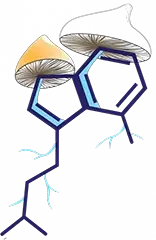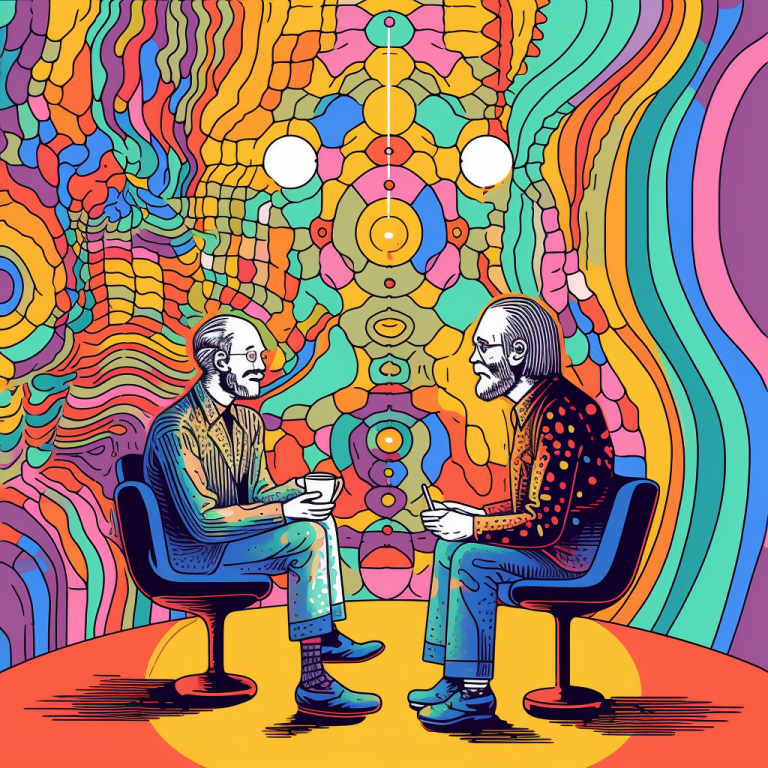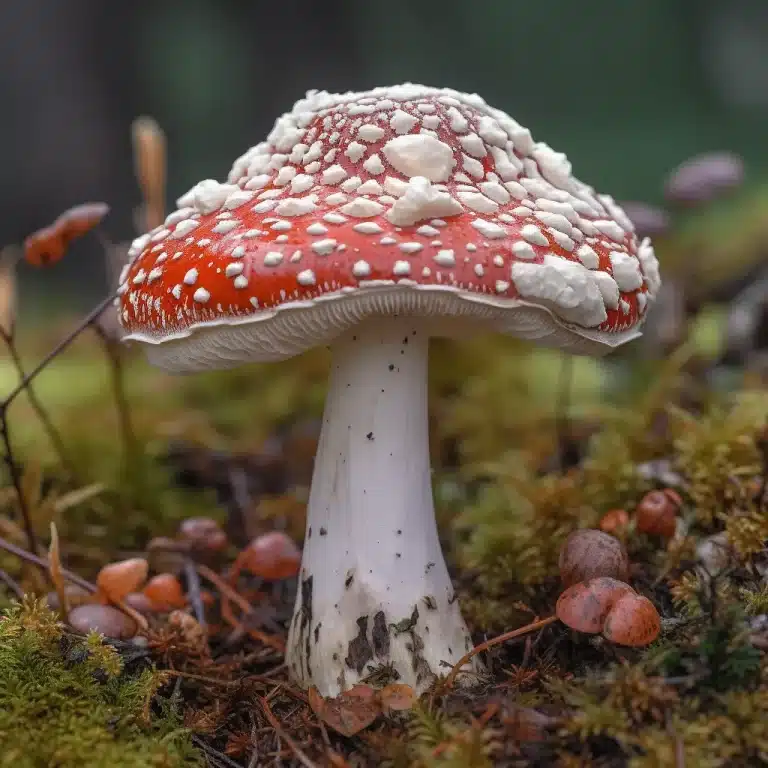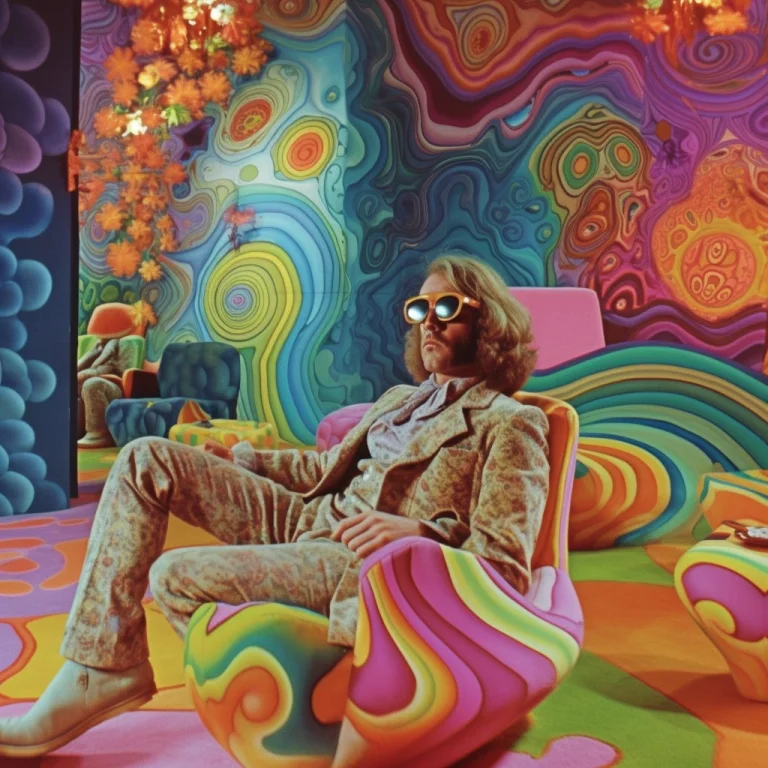A Genesis in the Psychedelic Epoch
During the kaleidoscopic years of the 1950s and 1960s, the enigmatic compound, LSD (lysergic acid diethylamide), drew innumerable researchers and medical professionals into its orbit, offering a glimpse into the complexities of the human mind through a lens that seemed almost otherworldly. It was an era of explorative fervor and pioneering advancements in understanding this potent psychedelic compound, whose promises and challenges continue to reverberate in the collective consciousness of scientific research.
The Tapestry of Times: Sociocultural Alchemy of the Mid-Twentieth Century
In the wake of the horrors of the Second World War and during the frosty exchanges of the Cold War, the Western world witnessed an undercurrent of profound shifts in societal and cultural norms. This era saw a burgeoning curiosity for mind-altering experiences and substances, driven by a broader aspiration to decode the enigma of human consciousness. The allure of psychoactive substances like LSD skyrocketed, fueling scientific and clinical inquiries into their potential to unearth the hidden recesses of the human mind and transform mental health paradigms.
LSD: The Mysterious Alchemical Elixir
Albert Hofmann, a Swiss chemist, chanced upon the psychedelic properties of LSD during a self-experimentation episode in 1943, in an event reminiscent of an alchemist stumbling upon a philosopher’s stone. This chance discovery led to rigorous investigation and synthesis of the compound, unveiling its unique characteristics. Sandoz Laboratories, the cradle of Hofmann’s discovery, seized upon the significant potential of LSD and set about investigating its effects and possible therapeutic uses, walking the fine line between scientific rigor and alchemical curiosity.
The Trailblazers: Exploring the Mental Cosmos
Early scientific pioneers like Humphry Osmond and Abram Hoffer were instrumental in exploring the psychological and therapeutic ramifications of LSD. Their work revolved around its potential to ameliorate conditions such as alcoholism and psychiatric disorders. The compound’s ability to conjure profound alterations in perception, sensory experiences, and consciousness attracted research endeavors, making LSD a veritable portal into the mental cosmos.
Navigating the Inner Landscape: LSD-assisted Psychotherapy
A novel concept emerged during this period: LSD-assisted psychotherapy, an amalgamation of psychoactive substance and therapy designed to enhance introspection, emotional resolution, and personal evolution. Clinical trials demonstrated promising outcomes in the treatment of alcoholism, addiction, and psychiatric disorders, suggesting LSD as a potential catalyst for therapeutic transformation.
The Guardians of the Psychedelic Frontier
Sandoz Laboratories held a pivotal role in facilitating LSD research during this period, supplying the compound to researchers and clinicians. Figures like Timothy Leary, a psychologist at Harvard University, became notorious for their groundbreaking work with LSD during the 1960s. Other institutions, including the Maryland Psychiatric Research Center, also played their parts in this shared narrative of exploration.
A Light in the Abyss: Medical Possibilities and Potential Merits
Initial research hinted at LSD’s potential as a therapeutic ally for a range of psychiatric conditions, including anxiety disorders, depression, and post-traumatic stress disorder (PTSD). The psychedelic also offered potential solace to individuals facing terminal illnesses, as studies demonstrated its capacity to alleviate anxiety, boost emotional wellness, and foster acceptance of mortality.
A Public Dilemma: Promise, Fear, and Misunderstanding
During the mid-twentieth century, there was a simmering sense of excitement and hope about the therapeutic prospects of LSD. However, growing public awareness stirred apprehension about its possible risks and misuse, with sensationalized media accounts stoking the flames of uncertainty and regulatory challenges.
The Fall: Sociopolitical Shifts and Legal Constraints
The tide began to turn against LSD by the late 1960s, as sociopolitical shifts and growing public concerns contributed to an increasingly prohibitive stance. By 1970, LSD found itself categorized as a Schedule I substance in the United States, a designation that largely stifled research and medical application.
Epilogue: Echoes of a Psychedelic Past
The psychedelic fervor of the 1950s and 1960s marked a watershed moment in the history of LSD research, showcasing its therapeutic potential and deepening our comprehension of consciousness. These formative years, ripe with discovery and potential, laid the foundation for today’s psychedelic renaissance, serving as a poignant reminder of the potential transformative power of these substances when navigated with scientific diligence and ethical mindfulness.
[gap height=”130px”]
[ux_image id=”8401″]
[gap height=”130px”]
We hope that you have gained a little more understanding and wisdom after reading through our article about LSD. We hope that it has inspired you to explore the multitude of possibilities through LSD.
Shroomhub is your trusted online source in Canada for all things Psychedelic, from Magic Mushrooms, LSD and even DMT, take advantage of our weekly deals and bargain prices you wont find anywhere else!
[gap height=”130px”]
[message_box]
[row v_align=”middle” h_align=”center”]
[col span=”9″ span__sm=”12″]
Author
Freelance Writer
Leo Thomas
[/col]
[col span=”2″ span__sm=”12″ align=”center”]
[button text=”Linkedin” color=”white” style=”outline” radius=”99″ link=”https://www.linkedin.com/in/leo-thomas-24b827279/”]
[/col]
[/row]
[/message_box]




